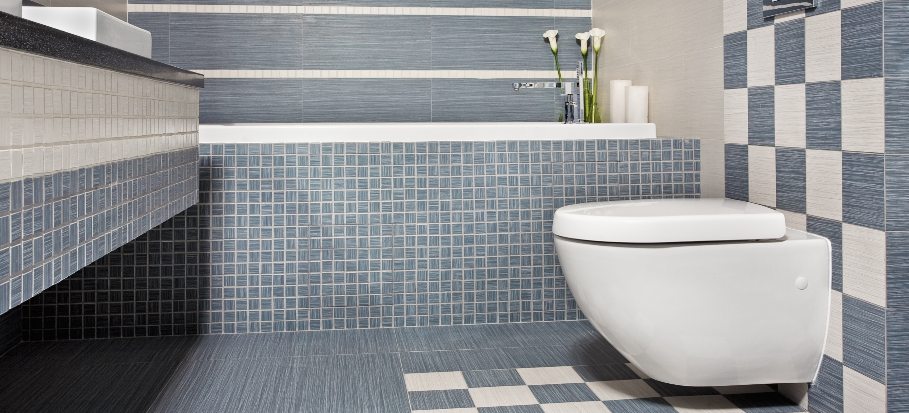Types of Toilets, Styles and Toilet Mechanisms

Choosing the right toilet type goes beyond aesthetics. It involves balancing space, functionality, water efficiency, and user comfort. From classic two-piece toilets to high-tech smart models, modern options cater to every requirement, ensuring a functional, stylish, and sustainable bathroom solution.
When it comes to designing or upgrading a bathroom, choosing the right toilet type is crucial. Modern toilets are no longer just functional fixtures; they combine style, efficiency, and innovation to suit every need. From compact toilets for small spaces to smart toilets with advanced features, understanding the varieties available ensures the perfect fit for your home or commercial setting.
What are Toilets Made of And How Do They Work?
Let’s start by looking at what parts are toilets made of and how does a toilet work? They generally consist of a few key parts:
- Waste pipe
- Cistern or water tank
- Flush mechanism – either a button, lever or a chain
- S-bend or S-trap – this is essentially an S-shaped pipe, designed to trap liquid to avoid unwanted flow. You’ve probably noticed that toilets always have some water in the bottom, even after a flush. That bit of water seals off the sewage pipe below to stop germs, bacteria and awful smell from coming into your bathroom.
- Toilet bowl and a seat
As you can imagine there are a lot of requirements toilet materials should cover – they must be water and chemical resistant, easy to clean and maintain, hygienic, solid, not sensitive to temperature changes. They make the vast majority of toilets of a special clay called vitreous china, more commonly known as porcelain. Some are made from stainless steel.
There are a variety of toilet types, styles, flushing mechanisms to choose from. We are going to discuss them in more detail as the article prog.
Toilet Types Explained
Depending on the circumstances of your home and your preferences, there are quite a few different types of toilets to consider before your last choice of a unit. The process could easily become overwhelming. So we have listed the most preferred toilet types in the UK:
1. Dual-Flush Toilets
As the name suggests, they have two flush button options – a half flush and a full flush. The half flush is used for liquid waste, while we use the full flush for solid waste. One of the greatest benefits of a dual-flush toilet is water efficiency. Their price is higher, however, they are good for the environment and your budget. Many countries have adopted this type of toilet to deal with water shortages.
2. Double Cyclone Flush
Double cyclone flush toilets are the latest option on the market. They use less water per flush while having the same power as a full flush. Although not as water-efficient as dual-flush toilets, they are still considered eco-friendly. Buying one most definitely has a positive effect on your monthly water bills.
3. Pressure Assisted Toilets
Their biggest advantage of a pressure-assist toilet is the powerful flush. The mechanism uses pressurized air to force water into the toilet tank. This means almost no double flushes. Pressure assisted toilets are suitable for households with a lot of members, where the toilet is used more frequently. There is one disadvantage to consider, though – they are noisy.
4. Gravity-Flush Toilet
Gravity-flush toilets are commonly used in domestic properties throughout the world. The toilet tank holds water that drops into the bowl once you press the flush button. The water then pushes all the waste through the trap way. Gravity-flush toilets are silent, have fewer parts, and are extremely easy to maintain over the years. It’s no wonder they are a big hit on the market. With one of these, you almost never get a clogged toilet to deal with.
5. Composting Toilets
The biological process called composting treats human waste, and that’s where this type of toilets got its name from. Most of these toilets use bulking materials, such as sawdust, wood chip, coconut coir, or peat moss after each use.
When human waste is properly composted, the finished product is safe and easy to handle, there is no unpleasant odour and all liquids are evaporated. The compost works well on plants, reducing the need for commercial fertilizers and preserving local water quality. Used and maintained correctly, composting toilets can be an elegant addition to a modern bathroom.
6. Waterless “Dry Sanitation” Toilet
This toilet doesn’t use any water to flush. The composting toilet is, in its nature, a waterless toilet. They are very suitable for areas with underdeveloped infrastructure, environmental or water deficiency problems. Waterless toilets are not very popular among households but are frequently used at workplaces and outdoor event sites, or camping areas.
7. Upflush Toilet
Upflush toilets eliminate the need for drilling holes into your bathroom floor and installing complex plumbing systems. Virtually, they are fully mobile and can fit anywhere in your property. For instance, Saniflo toilets are mostly used as macerators, however, you can also utilise them in the kitchen. It’s recommendable to seek the help of a Saniflo plumber for professional advice on placement and installation.
The fundamental difference between upflush toilets and standard fixtures is the discharge system. The mechanism consists of a macerator toilet unit and a small pipe. The macerator processes solid materials like human waste and toilet paper. The resulting mixture of material and flush water moves through an upward pipe into the sewage. The discharge pipe, as small as 3/4″ across solves many structural problems. The fine slurry, moved by a pump, goes through the sewage system, septic tank or holding tank.
The professional Saniflo upflush toilet installation engineers can give you a further information on whether these units are suitable for your home, how they operate, and which is the best model that can turn your unused space into a functional one.
8. Portable Toilets
These are small toilets that can be easily transported from one place to another. They are perfect for hiking, camping, festivals and any other outdoor activities. You can carry your small portable toilet easily and do your part in keeping the environment clean and protected.
Understanding Different Toilet Types
Next, you should decide on your toilet style. You can choose whether you want your toilet to be a single piece or a two-piece one, wall-hung or attached to the floor, high-level or low-level. But let’s get into some more details and discuss each option separately. Here’s a list of different styles of toilets for your property:
1. Two-Piece Toilets
Two-piece toilets separate the tank and bowl. They are the most common type found in homes and offer a balance between cost and functionality. Installation is relatively straightforward, and replacement parts are easier to source.
2. One-Piece Toilet
One-piece toilets integrate the tank and bowl into a single seamless unit. They are easier to clean, provide a sleeker design, and are generally more compact, making them ideal for modern bathrooms.
3. Smart Toilets
Smart toilets integrate technology for enhanced comfort, hygiene, and efficiency. Features may include heated seats, bidet functions, automatic flushing, and night lights.
4. Wall-Hung Toilets
Wall-mounted toilets attach directly to the bathroom wall, with the tank concealed behind a wall. This design creates a modern, minimalistic look and makes floor cleaning easier.
5. High-Level Toilet
High-level toilets will give your bathroom a beautiful traditional look. They have a cistern fitted high up on the wall, which must be solid or reinforced to avoid any issues. High-level toilets feature a long chrome flush pipe with a long pull chain flush for an exquisite design.
6. Low-Level Units
Similar to the high-level toilet, they give your bathroom a more vintage look. The cistern is fitted at a lower level, which makes the flush pipe shorter. The flush mechanism operates with a lever of a classic design.
7. Dual Flush Toilets
Dual flush toilets provide two flushing options: a half flush for liquid waste and a full flush for solid waste, reducing water consumption.
Flushing Mechanisms
Choosing a flush mechanism is important and may impact your water bills. Some of the most popular types of toilet flush in the UK are the single flush toilets, dual flush units, touchless flushing and flushometer valve.
1. Single Flush Toilets
Single flush toilets have only one flushing mechanism for both liquid and solid waste. They are the most common toilet flush type you can see in traditional houses. One of their major disadvantages is that they use a lot of water, so they are not environmentally friendly. Also, often your flush button breaks easily and that’s an unpleasant task to deal with.
2. Dual Flush Units
They have two flushing options – half flush and a full flush for liquid and solid waste, respectively. Dual flush units are becoming increasingly popular because they save water. This makes them both environmentally and budget-friendly. They might be a tad more expensive than the single flush ones, however, they make up for it in the long term.
3. Touchless Flushing
Toilet flush buttons, levers, chains? With touchless flushing systems, you can forget about all of them. They are motion-sensor activated, which makes them convenient, modern and hygienic. They commonly use these flush mechanisms in public restrooms or office buildings.
4. Flushometer Valve
They use the so-called flushometer valve mechanism, which is suitable for tankless toilets. They have a powerful flushing mechanism and two key components – the toilet bowl and the flushometer valve. They are not very popular in residential properties and are mostly used in commercial, industrial, and institutional restrooms.
Choosing the Right Toilet Type for Your Bathroom
When selecting a toilet type, consider:
- Space availability: Compact or wall-mounted toilets suit small bathrooms.
- User needs: Comfort-height toilets are better for elderly or disabled users.
- Water efficiency: Dual flush or low-flow toilets save water and reduce utility bills.
- Aesthetics: Match the toilet design with your overall bathroom style.
- Budget: Include installation costs and potential maintenance.
Top Features to Consider in Modern Toilets
Modern toilets offer a range of innovative features, enhancing functionality and hygiene:
- Automatic flush systems for touchless operation
- Bidet functions with adjustable water pressure and temperature
- Heated seats and night lights for comfort
- Rimless bowls for easier cleaning and better hygiene
- Pressure-assisted flushing for powerful waste removal
Important Design Choices
Last but not least, here are a few more toilet design choices to consider – dimensions, toilet bowl type and outlet trapway type.
Standard Toilet Dimensions
The height of most one-piece toilets varies from 53cm to 79cm (21 to 31 inches), with around 25.5cm-40.5cm (14-16 inches) from the bowl rim to the floor. The depth of most toilets is within the 68.5cm-76cm (27 to 30-inch) range. The width is almost never over 51cm (20 inches). Two-piece toilets are not as low, and their total height may range from 66cm to 81cm (26 to 32 inches).
Toilet Bowl Types
There are generally 2 types of toilet bowl types – round and elongated. According to popular opinion, round toilets are better for smaller bathrooms, while elongated toilets are more comfortable to use.
Outlet Trapway Types
There are three outlet trapway types:
- Skirted ones offer clean line from front to back;
- Concealed types have a smooth surface at the back of the toilet where the trapway would normally be visible;
- Exposed ones are difficult to clean because of their location.
Things to Consider Before Choosing a Toilet
There are quite a few things to consider before buying a toilet – the size, design, plumbing installation and general layout of your bathroom. What seems like a simple task could turn out time-consuming or problematic if you don’t know your options.
Think about the size of your property. Is your room large enough? If not, you could save some space with a wall-hung toilet. And if you’d like to contribute to the environment and save some water, a dual flush system might be your best choice. It also eases your monthly water bills. Due to their mobility, upflush toilets are the perfect choice when you don’t want to spend resources on additional pipework.
Think about the removal and installation of the new toilet, and consider how would you approach the task. We recommend a DIY installation only if you know what you are dealing with.
How Much Does it Cost to Install a Toilet?
Toilet installation costs £98 per hour on average, and it may take up to 2-3 hours. The time may increase if your project requires pipework. The price range may change if the work has to be done in the evening or during the weekends. If you want to book an expert installation, always look for professional plumbing services.
Takeaways
There are quite a few important things to consider before installing your toilet:
- Toilet type
- Toilet style
- Flush mechanism type
- Toilet design
- Toilet bowl type
- Outlet trapway type
Once you have all the above figured out, choosing the most suitable toilet for your property and needs becomes a piece of cake.
Types of Toilets, Styles and Toilet Mechanisms
Need help? Hire the London Property Service experts today by giving us a call on 020 3078 5920.




